In Asia
The Shape of
Perfection
Joe Cummings (Text)
Bill Wassman (Photographs)
(Lonely Planet)
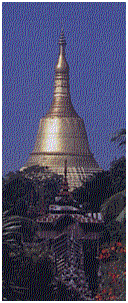
Buddhist Stupas in Asia contains 250 photographs of the most interesting or unusual, and it's a feast for the heart and soul. Some, such as the Pha That Luang in Laos are hoary, streaked with age. Others, such as the Taxila in Pakistan are nothing but a ruined hump in a meadow.
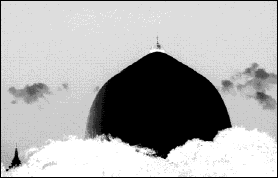 In Sri Lanka, alongside the Ayeyarwady River, countless brilliant white spires stick out of the greenery. The Wat Arun in Thailand is a riot of porcelain decorations and figurines with scary faces.
In Sri Lanka, alongside the Ayeyarwady River, countless brilliant white spires stick out of the greenery. The Wat Arun in Thailand is a riot of porcelain decorations and figurines with scary faces.
The Wat Phra has a spire of solid gold pointing straight up from its bell-like base. The eyes of Vairochana Buddha peer out in the four directions from the stupa in Kathmandu called Bodhnath.
In this particular volume --- 170 pages of pictures and text --- there are a dozen clear overlays to illustrate the basic structure of the major stupas. When Margot and I were in Bangkok, we went to the Wat Pho --- which we thereafter referred to as the "What fo'." I can remember nothing about it except a very noisy guide type who insisted on following us around and offering his services.
Some stupas are designed so that you can trace the stages of life by going around and up into them. The recent destruction of two Buddhist statues by the Taliban is neither rare nor unusual. There are several photographs of stupas that have been razed by Muslim radicals --- especially in Indonesia.
The Great Stupa in Sri Lanka is just that: breathtakingly great. It was built 2,150 years ago. As the Zen Masters would have it, who (or where) were you 2,150 years ago? The biggest stupa of them all is in Java, hardly a hotbed of Buddhism nowadays --- more the home of beefy Australian surfers out for a cheap drunk. It --- the stupa, not drunken Australians --- was discovered by Thomas Stamford Raffles in 1817, and is in Borobudor.
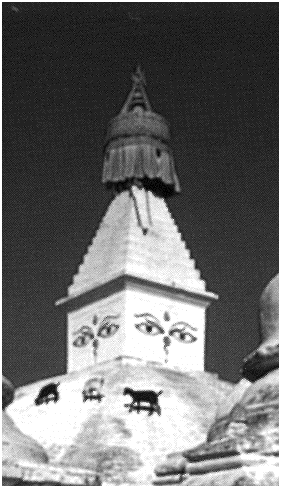 If you want my advice, and if you were setting out to visit just one, I'd pick the 11th Century Bogan in Burma, named after the great Buddhist mystic Hum Fre Bogan. The great gold bell-shaped dome should make you give up your stodgy Presbyterianism forever.
If you want my advice, and if you were setting out to visit just one, I'd pick the 11th Century Bogan in Burma, named after the great Buddhist mystic Hum Fre Bogan. The great gold bell-shaped dome should make you give up your stodgy Presbyterianism forever.
Some stupas have the relief of a rabbit carved on the side, representing peace and fecundity. Or the moon. Did you know that to the Japanese the man in the moon is a rabbit grinding mooshi? The next time you peek at the moon, see if you get the picture. When they answer the telephone in Tokyo, they say, "Mooshi- Despite my stupid stupa memory lapse, and from what I can see here, the What Fo' is fairly stunning. As the author points out, stupas are not locked off from the world like, say, much of the Vatican. They are there, day and night, to be wandered through. One I do remember in Bangkok had a Buddha lying down, as if for a quick nap. Can you imagine a cathedral in Europe with a forty-foot reclining Jesus? Another showed a giant Buddha, towering over us all, beautific smile and all. Worshippers plastered gold leaf on his huge toenails. I swear, those toenails were as big as my head, and the gold beat out any put out by Revlon. I've had fungus under one of my toenails for over fifty years now, but let's not get into that now.
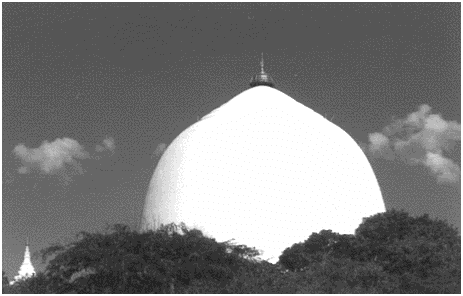
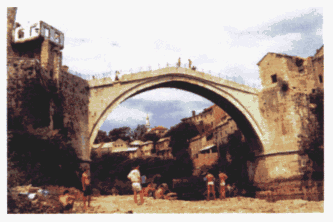
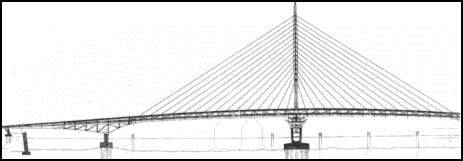
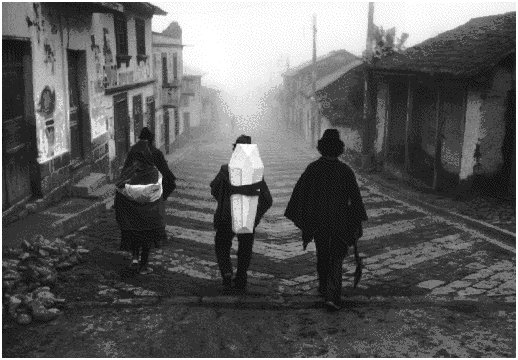
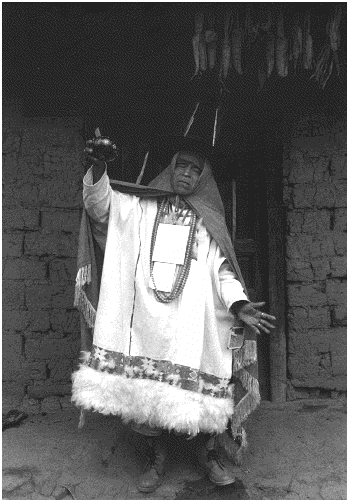 "We know that we would never have discovered the beauty of this women if it hadn't been preceded by the masks of the gods, the skins of the animals, the elegant robes of the saints, and even the corn-stalk capes of the corn farmers....
"We know that we would never have discovered the beauty of this women if it hadn't been preceded by the masks of the gods, the skins of the animals, the elegant robes of the saints, and even the corn-stalk capes of the corn farmers....